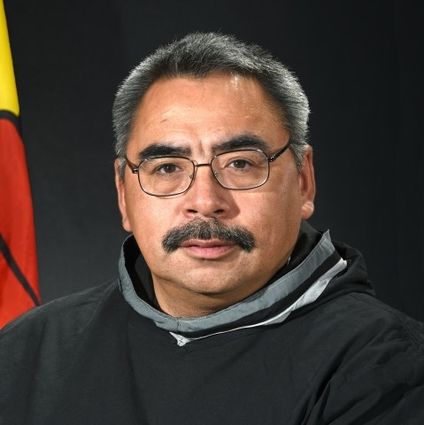North needs access to tap mineral wealth
Lack of infrastructure hampers Canada's three territories North of 60 Mining News – September 1, 2018
Last updated 9/25/2020 at 6:26am
A dearth of infrastructure in Canada's northern territories is proving to be a severe hindrance to mine development in mineral provinces ranked by many among the most attractive and stable in the world.
The lack of roads, ports, power, telecommunications and land access north of the 60th parallel in Canada dominated discussions at an annual gathering of the country energy and mining ministers, held in Iqaluit, Nunavut Aug. 12-14.
"Our opportunities are hindered by infrastructure, the lack of fiber, the lack of roads. These are various things that helped develop the country east to west. Canada needs to focus up North, be it Yukon, N.W.T. or Nunavut," said David Akeeagok, Nunavut's minister of economic development and transportation.
Akeeagok said Nunavut is ready for more development - if it can get the infrastructure it needs in place.
Similar challenges next door
Mine development in neighboring Northwest Territories and Yukon is also hobbled by a lack of infrastructure.
"Roads and pipelines into the North are not just northern projects. They benefit our country as a whole," NWT Premier Bob McLeod told participants in the Pacific Northwest Economic Region Annual Summit July 25.
"Our infrastructure is underdeveloped, and for most modes of energy transportation, we are remote from markets. We have resources. What we need is the investment capital to get our projects off the ground," he said.
Developing two northern corridors, the Mackenzie Valley Highway and the Slave Geological Corridor, would jumpstart economic prosperity for the North and for its partners, McLeod said.
A Mackenzie Valley Highway would open access to the rich natural gas reserves of the NWT's Sahtu region and support mineral resource exploration and development in a region that has seen relatively little activity.
"It would provide the people from our northern regions the same competitive edge that has allowed those in the south to prosper from our diamond sector. It is the same route that we proposed for a pipeline to ship our natural gas reserves south. But one that could be re-profiled to ship Alberta product north," McLeod said.
Developing the Slave Geological Corridor also would provide better access to NWT's diamond fields and possibly connect the region to a deep-water port on the Arctic coast.
McLeod said the improvements will reduce operating costs for existing mines and spur resource exploration and development activities in a vast, untapped and resource-proven region.
The Slave Geological Corridor also could support development of hydropower and a transmission line project that could bring electricity to mines in the region.
In addition, this infrastructure project would give a remote corner of neighboring Nunavut much-needed access in that the Slave Geological Corridor straddles the border between the two territories.
Yukon, meanwhile, is making headway in developing additional infrastructure.
Working in cooperation with the Government of Canada to spur mine development, Canadian officials agreed last fall to spend C$247 million on the Yukon Resource Gateway Project, which is designed to upgrade existing infrastructure over eight years in two key areas of high mineral potential and active mining in the territory.
The improvements involve more than 650 kilometers (423 miles) of roads, including four separate systems in the Dawson Range, where several mine projects are currently in advanced stages of development. The project also will bring upgrades to the existing Nahanni Range Road, from its junction with the Campbell Highway to the Yukon/NWT border.
Working in cooperation with First Nations, the Yukon government has committed to spend up to C$112.8 million on the project, while industry would contribute the remaining C$108.6 million.
No-go for Grays Bay port, road
Nunavut, by comparison, had a recent proposal for infrastructure improvements rejected by federal officials this spring.
The proposed Grays Bay Port and Road Project would construct a 227-kilometer (141 miles) all-season road to connect a proposed deep-water port at Grays Bay on the northwestern shore of mainland Nunavut between Bathurst Inlet and Kugluktuk to an existing winter road that services NWT's diamond mines. Estimated to cost roughly C$527 million, the project would provide direct and relatively economical access to one of the most mineral-rich areas in both territories. It also has the potential to create 2,250 jobs in Nunavut and contribute C$665 million to the territory's mining revenues, according to a January 2018 economic assessment report.
Transport Canada rejected a request for 75 percent of funds needed to construct the facilities in May and offered little explanation for its decision, saying only that the proposal did not fit its funding guidelines.
However, the Kitikmeot Inuit Association, a group representing Inuit residents of the western region of Nunavut and a co-sponsor of the proposed project, has cited a decision by the Government of Nunavut to withdraw its support for the proposal in March as a contributing factor in Ottawa's decision.
Despite the setback with the Grays Bay project, infrastructure development in the three territories is inching forward, albeit seemingly at a snail's pace. The Canadian government has pledged to spend at least $400 million of Canada's C$2 billion National Trade Corridors Fund during the next decade on trade and transportation infrastructure in the territories.
Mining industry officials also have weighed in with unqualified support for developing more infrastructure in Canada's Far North
"The strongest candidate for infrastructure investment that brings a significant return on investment is the Slave Geological Province, one of the richest mining regions in northern Canada," Gary Vivian, president of the NWT & Nunavut Chamber of Mines, said in a July 16 editorial. "Investment in a nation-building highway that would join Nunavut to southern Canada by road through the Slave Province would help sustain our current diamond mines and would reduce exploration and development costs to make new mines possible in both territories. Government would continue receiving good returns to pay off their investment, and the mines would provide significant benefits to all northern residents.
"That is why we continue to urge governments to invest in the Slave Province road and Gray's Bay road and port," Vivian wrote.
"Historically, the federal government made good decisions to invest in infrastructure for mining development. Mining then helped pay off the infrastructure, which also became a public good after mining was done.
Vivian also listed other examples of successful federal investment in infrastructure in the north: Snare hydropower for Yellowknife and its mines; Taltson hydropower and the Great Slave Lake railway for the Pine Point mine; roads to resources and mining towns of Yellowknife and Pine Point; and in investment in the world's first ice-breaking cargo ship, the MV Arctic for the Polaris and Nanisivik mines in Nunavut.
"By supporting and enabling mines and their economic contributions, government recouped their infrastructure investment. As a bonus, that legacy infrastructure is still serving the north and Canada today. They were good investments by Canada," Vivian added.
Land use issues in Yukon
The Yukon government, meanwhile, is making headway with efforts to consult effectively with First Nations and others who express concerns about new infrastructure projects in the territory.
Yukon officials, for example, signed a pact with the First Nation of Na-Cho Nyäk Dun in May that may lead to the construction of an all-season tote road by ATAC Resources Ltd. to its gold project north of Mayo. The 65-kilometer (40 miles) gravel road would link the Tiger deposit in the western portion of ATAC's 115-kilometer (71 miles) long Rackla gold property to the town of Mayo to the south.
"When the ATAC Access Road was proposed, we heard the concerns from the First Nation of Na-Cho Nyäk Dun about proceeding with this type of development in the absence of land-use planning," said Ranj Pillai, Yukon's minister of Energy, Mines and Resources.
To resolve those concerns, Yukon officials engaged in collaborative discussions and agreed to set up land use and road access management planning processes that will include the First Nation in developing a land use plan by March 2020, before construction of the road begins.


















Reader Comments(0)